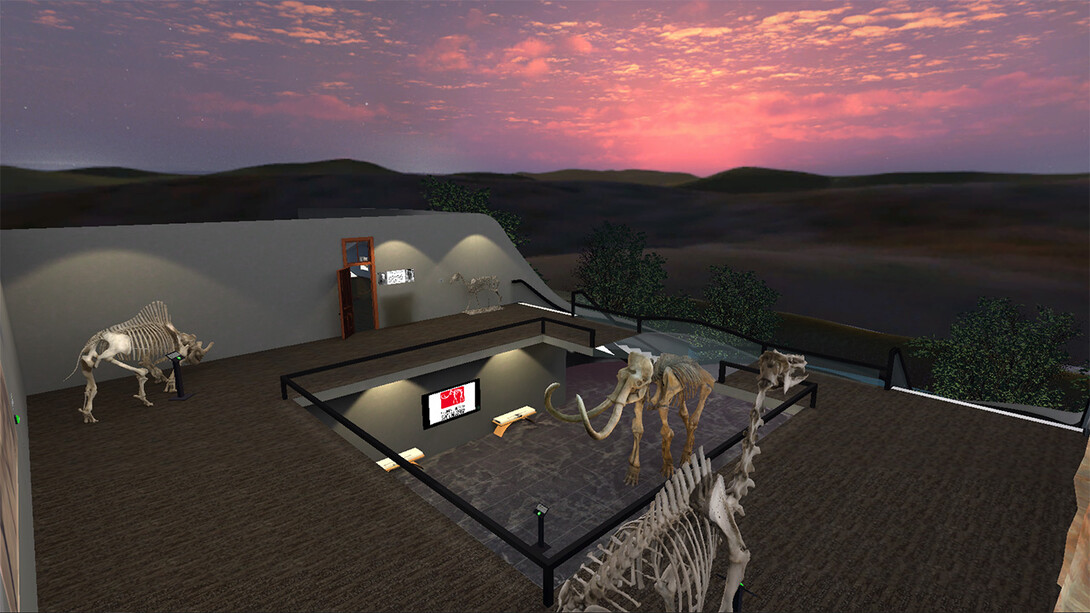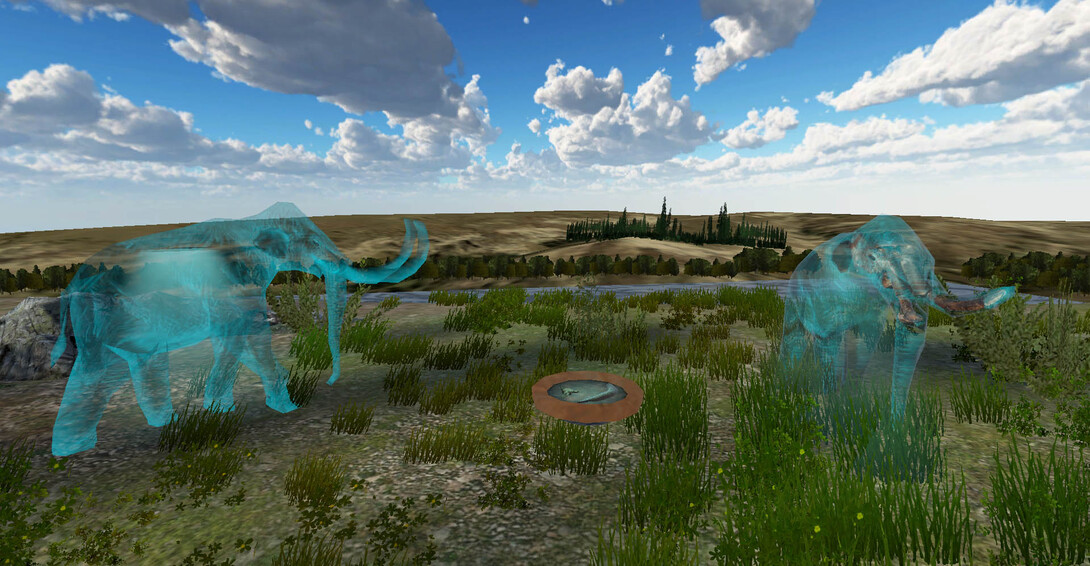
A collaboration between Nebraska Public Media Labs and the University of Nebraska State Museum allows visitors to virtually travel back in time to prehistoric Nebraska and get a feel for how it has changed over the millennia.
Visitors to “Expedition Nebraska: A Natural History VR Experience” can use laptops, mobile devices and soon virtual reality headsets to “meet” some of the animals that lived and died during the millions of years before humans migrated to the Great Plains.
To visit “Expedition Nebraska” on the web, click here. Versions for mobile devices are available now in the Apple App and Google Play stores.
The collaboration is among the first of its kind between a museum and a public media company. It leads the way in creating the next generation of public media, demonstrating the potential for these sorts of emerging media collaborations between cultural institutions.
The journey begins in a courtyard set within a landscape resembling Nebraska’s Sandhills during a summer sunset. As visitors move virtually through the courtyard, they encounter photogrammetrically rendered models of animals – including Nebraska’s iconic Archie the mammoth skeleton – giving a sense of actual size and scale.

A second portion is a recreation of the NU State Museum’s “Museum Builders” exhibit from 2019, and documents the history of the museum. Set in a simulation of the first museum site, a room that was located in the long-since demolished University Hall on City Campus, University Hall and the 1870s prairie can be “seen” out the windows. As visitors move around the room, they can interact with virtual models of some of the first items added to the museum’s research collection.
The first full exhibit in “Expedition Nebraska” is the Cave of Time. Within a simulation of a Dakota Sandstone cave, inspired by Robber’s Cave in Lincoln, visitors can access seven ages of North American land mammals. These fully immersive “bioramas” show how Nebraska’s climate changed over the ages and feature photogrammetrically rendered fossils.
The fossils appear either with holographic shapes of animals once made up of those bones, or as specimens on floating on tables. As visitors explore each age, they are invited to play audio that explain more about these creatures and the environments in which they lived.
The goal of the interactive experience is to give visitors the world over access to the rich scholarship and collections existing within the University of Nebraska State Museum, and over time, create a repository of educational resources for future generations.
Keeping their eyes on a distant horizon, Nebraska Public Media Labs and the NU State Museum plan additional content, accessibility features and exhibits to be developed over the next decade.







